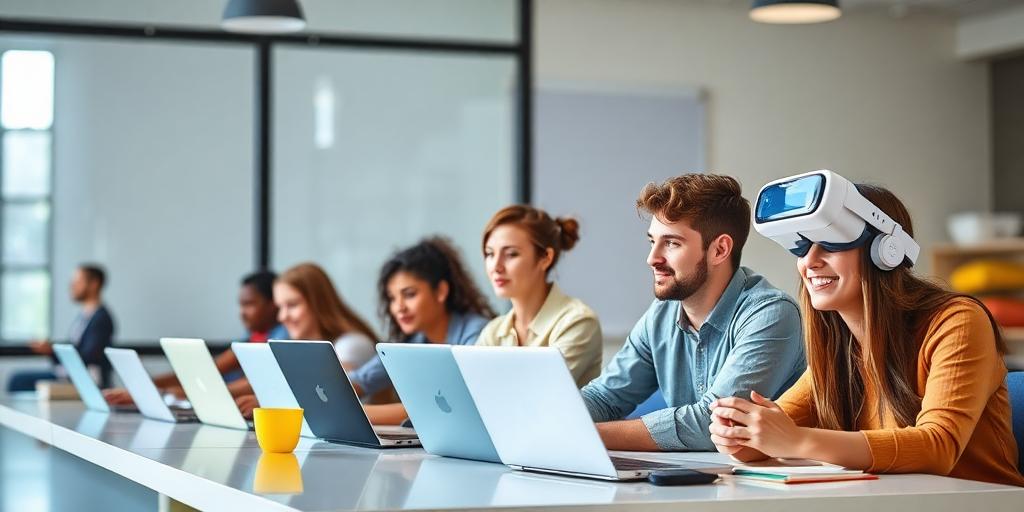The Evolution of Remote Learning
Remote learning has undergone a significant transformation, especially in recent years. Initially, it was seen as an alternative for students unable to attend traditional brick-and-mortar institutions. Today, it has evolved into a mainstream educational format, driven by technological advancements and changing societal needs. From simple online courses to immersive virtual classrooms, remote learning now offers a diverse range of educational experiences.
Key Technological Drivers
The proliferation of high-speed internet, sophisticated video conferencing tools, and interactive educational platforms has been pivotal. These technologies enable real-time interaction, collaborative projects, and personalized learning paths, making remote education more engaging and effective.
Impact on Lifestyles
The rise of remote learning has had a profound impact on lifestyles, affecting students, educators, and families alike. Its flexibility and accessibility have opened up new opportunities and presented unique challenges.
For Students
- Flexibility and Convenience: Students can learn at their own pace and on their own schedule, balancing education with other commitments.
- Accessibility: Remote learning eliminates geographical barriers, providing access to quality education regardless of location.
- Personalized Learning: Adaptive learning platforms can tailor educational content to individual student needs and learning styles.
- Digital Literacy: Engaging with online learning tools enhances students' digital literacy skills, crucial for future success.
For Educators
- Expanded Reach: Educators can teach students from around the world, diversifying their classrooms and broadening their impact.
- Innovative Teaching Methods: Remote learning encourages educators to experiment with new pedagogical approaches and technologies.
- Professional Development: The shift to remote teaching has spurred professional development in areas such as online course design and digital assessment.
- Work-Life Balance: While demanding, remote teaching can offer educators greater flexibility in managing their work-life balance.
For Families
- Increased Involvement: Parents often play a more active role in their children's education, providing support and guidance.
- Flexibility in Family Schedules: Remote learning allows families to structure their days more flexibly, accommodating various needs and activities.
- Reduced Commuting: The elimination of school commutes saves time and reduces stress for both students and parents.
- Challenges: Balancing work, childcare, and supporting remote learning can create challenges for families, requiring careful planning and communication.
Challenges and Considerations
Despite its numerous benefits, remote learning is not without its challenges. Addressing these issues is crucial to ensuring its long-term success and equitable access.
Digital Divide
Unequal access to technology and reliable internet connectivity remains a significant barrier. Efforts to bridge this digital divide are essential to ensure that all students have the opportunity to participate in remote learning.
Social Isolation
The lack of face-to-face interaction can lead to feelings of isolation and loneliness among students. Creating opportunities for virtual social interaction and community building is vital.
Maintaining Engagement
Keeping students engaged and motivated in a virtual environment requires innovative teaching strategies and interactive content. Educators must adapt their methods to capture and sustain student attention.
Assessment and Integrity
Ensuring the integrity of online assessments and preventing academic dishonesty are ongoing concerns. Developing robust assessment methods and promoting a culture of academic honesty are crucial.
The Future Landscape
Looking ahead, remote learning is poised to become an even more integral part of the educational landscape. Several trends are shaping its future trajectory.
Blended Learning Models
The integration of online and in-person instruction is gaining traction, offering a balanced approach that combines the benefits of both formats. Blended learning models allow for personalized learning experiences and flexible scheduling.
Artificial Intelligence (AI)
AI-powered tools are being used to personalize learning, provide intelligent tutoring, and automate administrative tasks. AI can analyze student data to identify learning gaps and tailor instruction accordingly.
Virtual and Augmented Reality
VR and AR technologies are creating immersive learning experiences, allowing students to explore virtual environments and interact with digital content in new ways. These technologies can enhance engagement and improve learning outcomes.
Microlearning
The delivery of educational content in small, focused modules is becoming increasingly popular. Microlearning allows students to learn at their own pace and focus on specific skills or topics.
Conclusion
The future of remote learning holds immense potential to transform education and empower learners worldwide. By addressing the challenges and embracing emerging technologies, we can create a more accessible, flexible, and effective educational system that prepares students for the demands of the 21st century.









